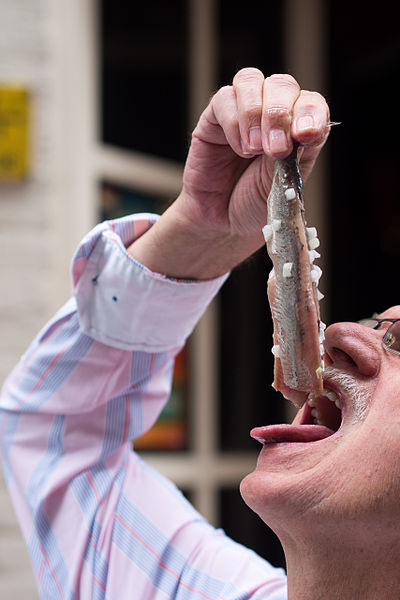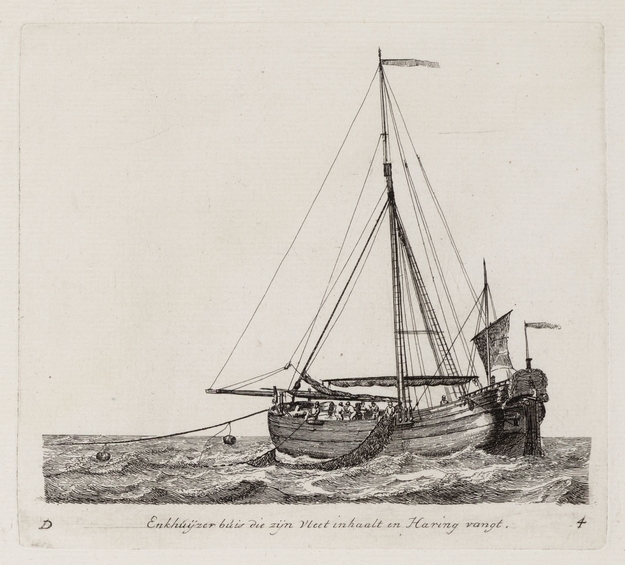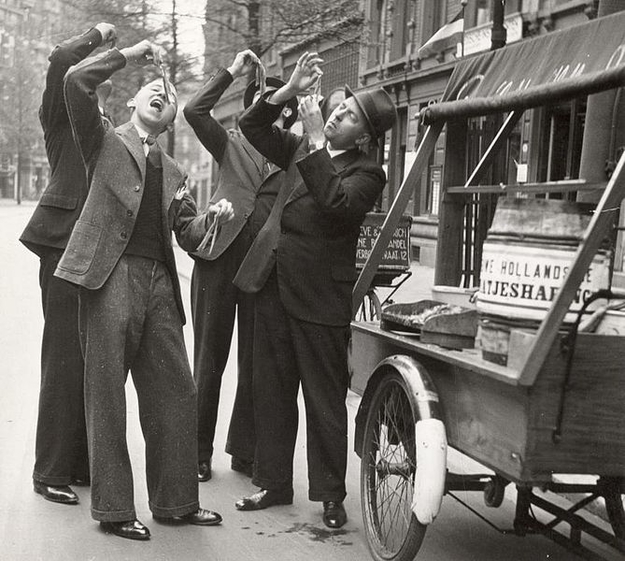Along the lines of the previous topic: The Amsterdam port did not only shelter ships coming from abroad. Some of the vessels coming into the docks were also ships related to local industry. During the Dutch Golden Age, we know that the Dutch fishing industry –alongside the Baltic grain trade—played a base role in northern Netherlands’ economy (Harreld, 2019). Not only that, by the 17th century, the fishing industry was the basis of a cultural cuisine: pickled herring.
Some scholars noted the North Sea herring fishery was the backbone of the Dutch fishing industry. This is evident in that the technology was relatively advanced in the 14th century. The method of curing/pickling herring was well known already in the Middle Ages. But the largest contribution by the Dutch was to begin the curing stage on board the ships. In return, this encouraged and enabled fishermen to stay at sea for longer and to explore deep-sea grounds off the coast of Scotland, the Shetland islands, and Iceland, for example (Unger, 1980). And all of this was done on some form of “factory” ships called the herring buss (haringbuis, in Dutch).
The whole curing-at-sea process begins with a process called gibbing, whereby the packers were to remove the gills and part of the gullet. This is to eliminate any bitter taste excreted; but at the same time, leaving the liver and pancreas intact was crucial to build the flavour. Another crucial element is leaving some parts of the gullet (the pyloric caecae, to be exact) intact, as it contains trypsin (Unger, 1980). This compound not only speeds up the curing process but also aids in developing a stronger and salient aroma in the end product. After the gutting, salt is added to begin the curing process and to extract the water; and then the salted herring is packed into wooden casks to store. But what is most interesting to us, is that this process meant that the herring were to be re-packed when the ship docks at the port.
As with every new technological advancement, this new curing-at-sea process did not yield profit from day one. When it first began in the 15th century, the cured-at-sea herring were not as good in quality as those treated on land. But soon, with the implementation of new fishery policies, better herring buss and fishing equipment, as well as establishment of political institutions to protect fishing boats and to regulate production, the herring fishery reached its peak in the late 16th century. By 17th century, Dutch herring was selling at a premium over pickled herring in France and England (Harreld, 2019). This was indeed the result of a long-term process of hands-on learning which meant that the herring fishery was filled with well-trained and experience personnel on every step of the production: from catching, to gutting, to curing, to repacking.
What is interesting to note in this narrative of the Dutch herring is the fact that these ships would have also docked at the Amsterdam port; and were also supplying locals with their dose of a unique –and definitely stinky-- Dutch cuisine. Especially noting the fact that the cured herring were re-packed at the docks would have meant that the product’s pungent aroma must have mingled with the permanent stench of fish guts and fishermen aboard these herring busses.


